4th Island Meeting Held on Shikinejima
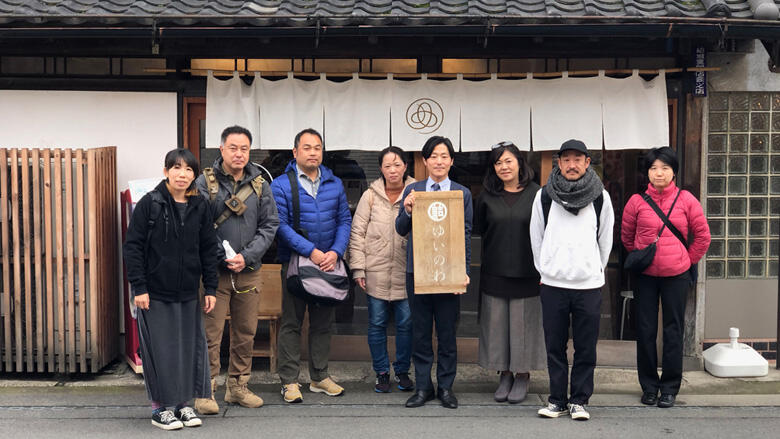
The Tokyo Treasure Islands Project is a project which aims to refine the Tokyo's islands brands through "Shima-Kaigi" (Island Meetings) with residents. This report covers the fourth island meeting and study tour of Shikinejima held on November 26.
>> Click here for more information on Shikinejima
Examples of communication spaces that become a hub for all kinds of networking
After the island meetings leading up to the present, the participants reexamined Shikinejima's traditional townscape and the warmth of the people. They rediscovered the value of regional brands that can only be nurtured on small islands. However, the business of the tourism peak season is extraordinary, and because there is no employment that lasts throughout the year, the problem of not being able to call in young people resurfaced.
The people of Shikinejima then came up with the idea of creating a space that will serve as a hub for the networking of various people through co-workation*. This is to create a space where human resources outside of the island can gather while the residents of the island live actively.
※A coined word combining "co-working," where people share office space while doing their respective jobs, and "workation," where people step away from the office and "work" while on "vacation." Sharing workspace is expected to produce interactions.
What should be done to create a communication space where residents and people from outside gather to promote the appeal of the island within and beyond? For Shikinejima's study tour, the participants visited Coworking & Café yuinowa located in Ibaraki Prefecture's Yuki City and Nanatsunoko, a community café located in Tokyo's Setagaya ward, to find hints.
What is the driving force behind utilizing "good and old" regional resources like Shikinejima?
Yuki City, the first place visited, is a castle town. Coworking & Café yuinowa is a shared space made from renovating a silk fabric store (built 90 years ago) that was known for using Yuki pongee silk.
In addition to coworking spaces, the building also houses terakoya-type halls that can be used for workshops or as resting spaces, shared offices, and an inner court that can be used for exhibitions.
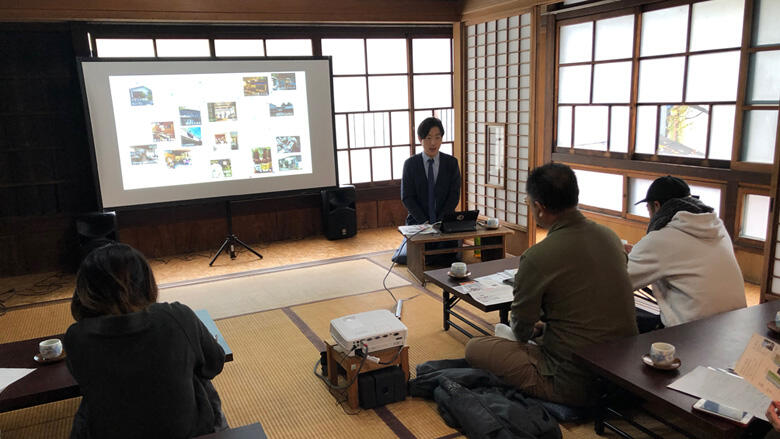
The participants all said that a calm arrangement with latticed doors and straw mat floors would surely allow them to work more efficiently. The participants focused especially on the Challenge Kitchen, whose owner changes daily. People who wish to open dining establishments can also use this space to test their skills. Some people have even opened their own dining establishments afterwards.
The person in charge at the Yui Project secretariat guided the participants through the facility. He said that the purpose for creating the space was to stop the outflow of young people from Yuki City. In response to the emergency challenge of the region not having any desirable jobs, the idea of creating jobs in IT fields that is a growing industry, came to mind.
Coworking & Café yuinowa, which focuses on coworking spaces, opened in 2017 with support from the city, which claimed that developing human resources may lead to attracting others. The area accepts employees who are part of human resource developing businesses as well as those from companies that engage in teleworking, and even serves as the city's support base for entrepreneurs with its migration and settlement consultation booths.
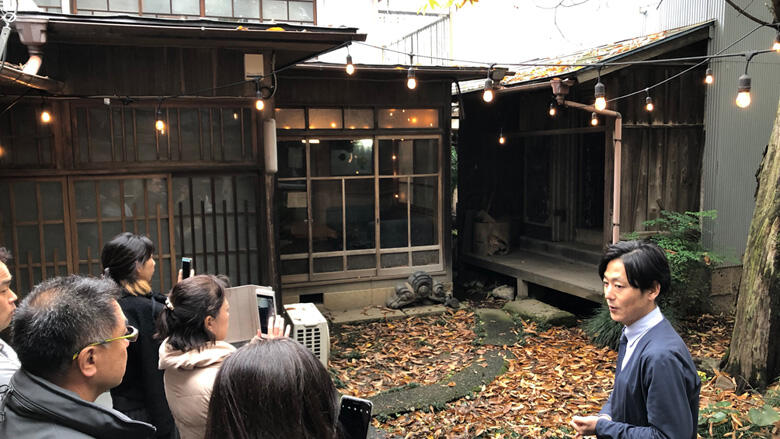
The Yui project is a voluntary organization made up by students, office workers, and public servants that focuses on urban development. It has been a decade since its founding, and holds various events, such as opening marches in several areas of the city and the Sound of Yui which turns old buildings into music clubs. It has been utilizing the regional resources of the castle city to actively develop community activities.
The participants largely nodded when the representative talked about the confidence: "I think the reason why the outside with many drawers (private) and the public were able to connect well together is because the lively development for raising the regional brand of Yuki City was continued."
Learning the power behind the scenes that connect people and places at a popular networking café
The next place that was visited was Nanatsunoko, which is a facility operated by the Tokyo Metropolitan Housing Supply Corporation as part of its project tasked to deal with the shrinking and ageing population (diversity plan) that opened in 2012 as a result of a large-scale public housing reconstruction.
Nanatsunoko is a community café located in Kosha Heim Chitose-karasuyama, which consists of 12 buildings in total. The indoor facility is around 200 square meters, has large windows, and is bright.
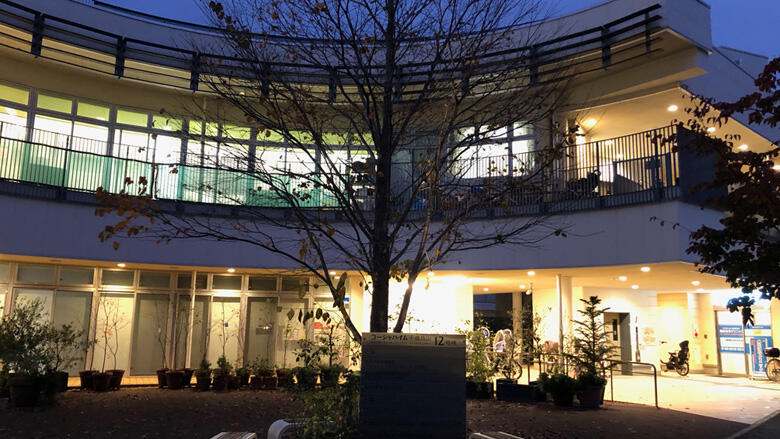
When shown the compact open kitchens that don't take up space and the exhibition space used to display warm handmade products, the participants said, "This is ideal!" and "I wish we could make a facility like this."
Here, the manager gave an overview on the facility. Nanatsunoko, which started as a café that can be used easily by people from different generations now cooperates with relevant organizations in the region and holds various events such as disaster prevention days, summer festivals, and marches, in addition to the café. It's also popular as a rental space used by ordinary people to hold classes and workshops, and the comprehensive schedule on the monthly letter is worth to see.
The motto of the facility is "A place where people in the region can do the various things they've wanted to do in various ways." According to the managers, the role of the staffs is to work behind the scenes. The events and workshops held almost every day cannot be handled by the staff alone, an instruction gathering for motivated people who have various skills and want to do something at Nanatsunoko is held twice a month. Explaining the usage methods and policies at once apparently results in people casually using the facility.
After the gathering, the actual use is decided after further consultation of each of the contents regarding preferences on usage methods with the staff in charge. The manager explained how the facility is operated: "We don't ask them to do it. We're offering a place where people in the region can take initiative and try the things they want to do."
She also explained tips on continuing networking spaces and how to operate it smoothly: "It's structured so that the creations that are sold, the participation fees of the classrooms, and the value of your work is obtained properly as income. It's also important to get a firm grasp on the important aspects of the operation, but also letting them take charge instead of taking everything upon yourself."
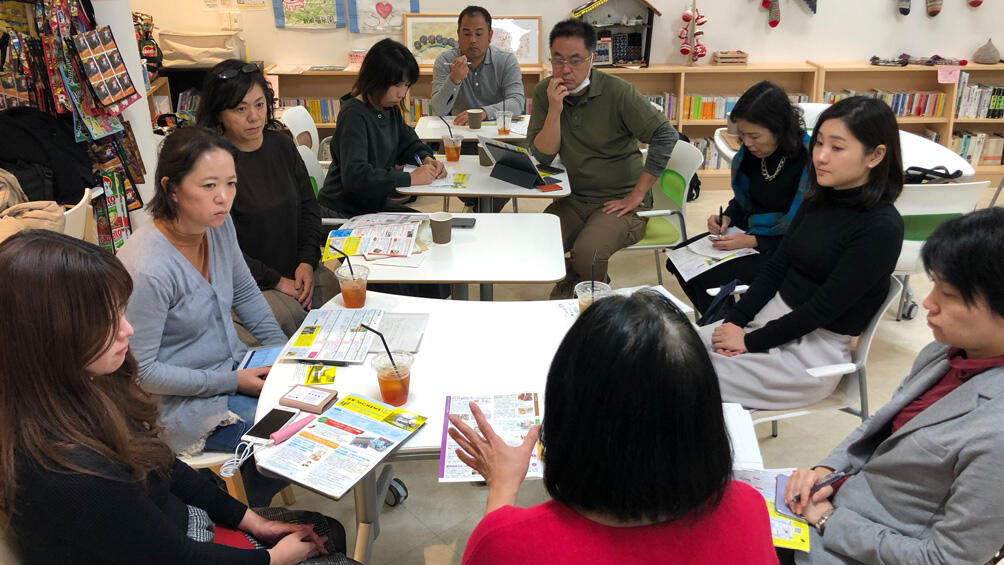
When a participant asked, "Wouldn't it be difficult to continue operating it privately?" she responded with a tip: "There is a big difference in operation methods between Chitose-karasuyama, whose purpose is to create interactions by creating a space open to the region, and Shikinejima, which is asking for a place that serves as the center of interactions among people whose faces are visible. It might be easier to operate if a coordinator who connects people took the lead while achieving balance between flexibility and rules."
In the Q&A session afterwards, questions on labor costs and operating hours were asked. Some participants were motivated and said, "I want to collect model cases of what we might be able to do now and use them as tips for action ideas." After learning at the study tour, the participants will look forward to the fifth island meeting.


